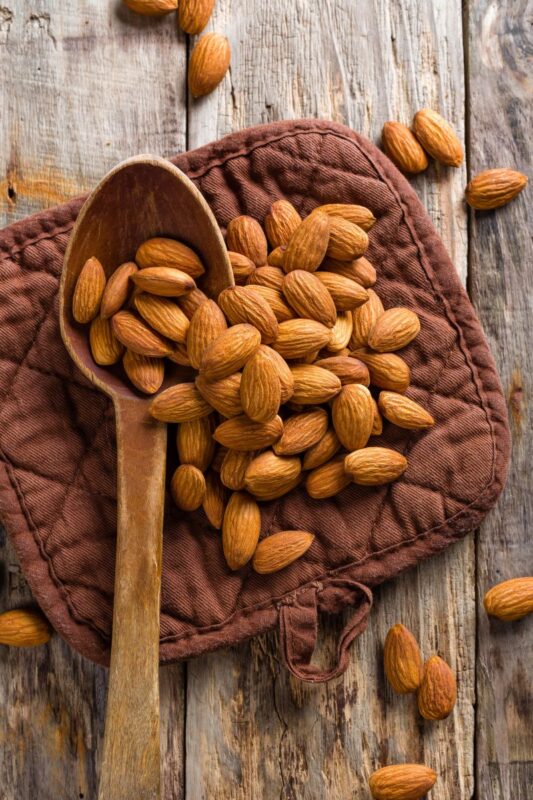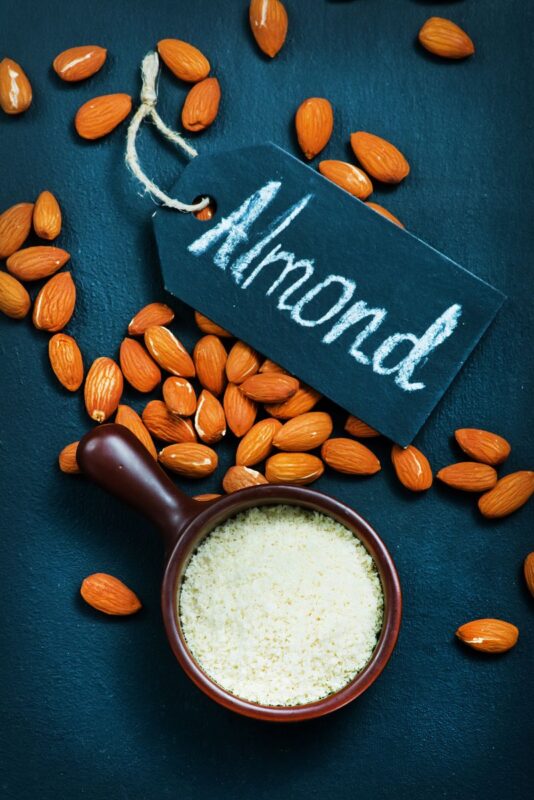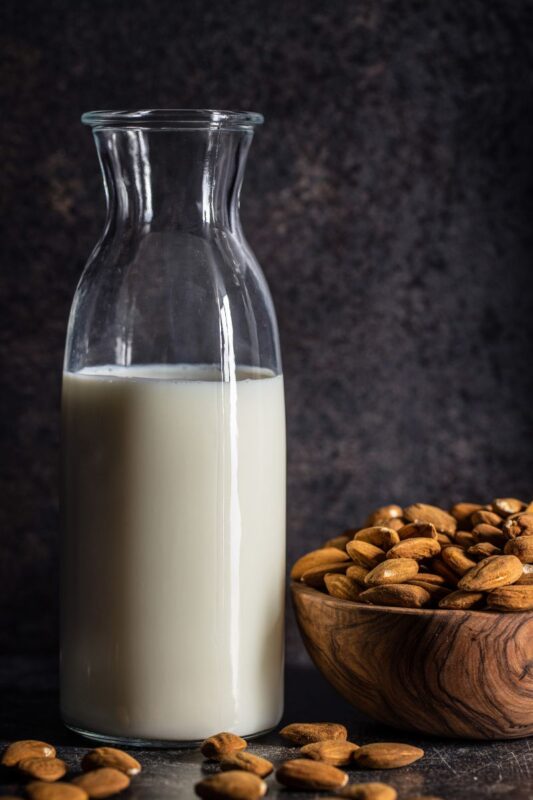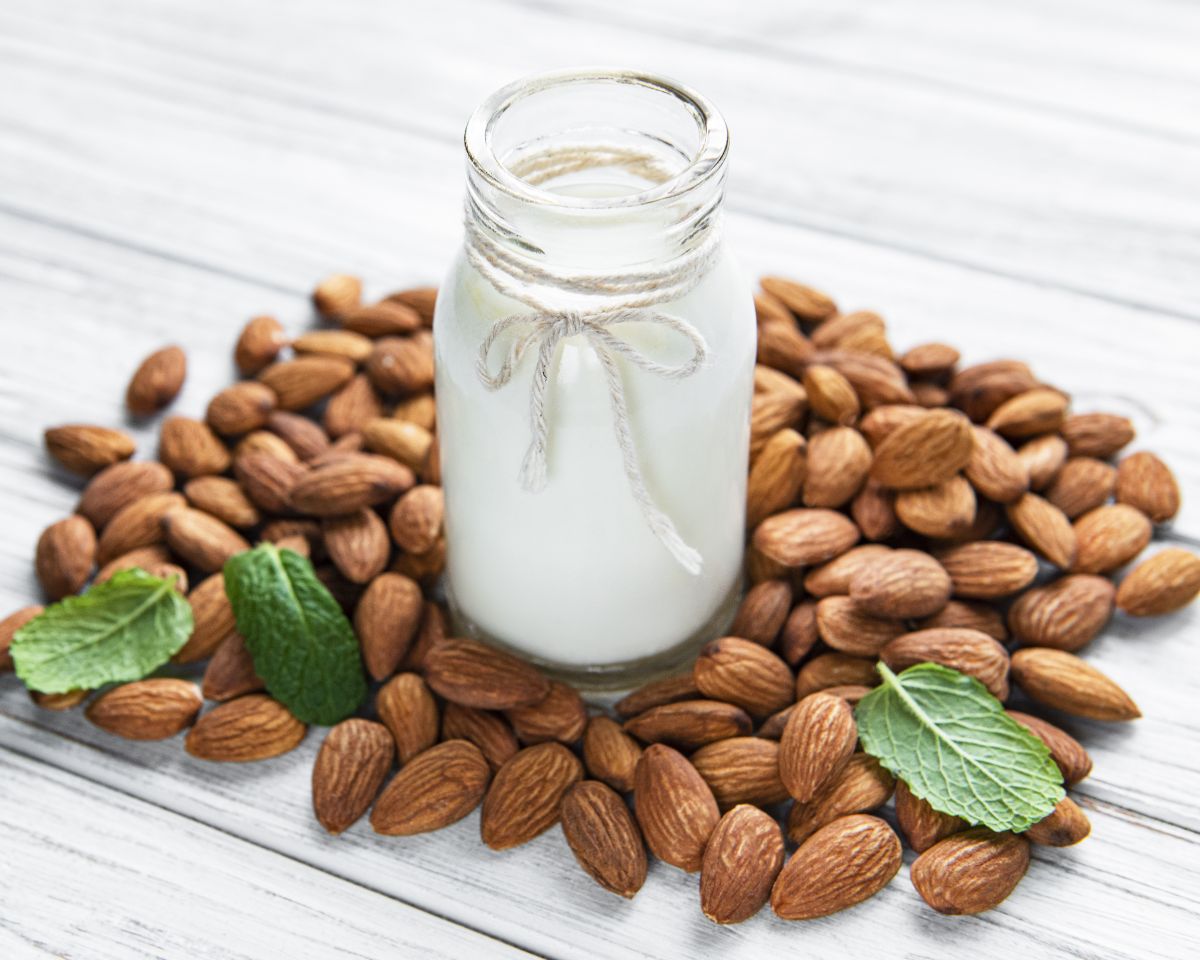We know that nuts are generally safe to eat – in moderation – if you suffer from fatty liver disease. But today we will talk about almonds in particular and especially almond milk – are these good for NAFLD?
There is no medicine accepted as a treatment for fatty liver disease. It can only be managed by making lifestyle changes and diet changes. You probably know already my fatty liver diet, which can include nuts like almonds.
Together with a big amount of calories, almonds contain vitamins, minerals, protein, and fiber – all of which are necessary as part of a healthy diet. And even though almond milk is processed, it is also an acceptable beverage if you suffer from NAFLD.

It’s not as good as lemon water, nor the supplement-like ACV, but it’s not as bad as sodas and other soft drinks either.
So now that we know that almonds – as well as almond milk – can be consumed if you have fatty liver disease, let’s find out more about these nuts and what makes them good.
Almonds: Beneficial Effects

The nutrients found in almonds promote beneficial metabolic effects. These reduce the risk to develop cardiovascular disease which can be detrimental in people with fatty liver disease.
Cardiovascular disease has been associated with high mortality rates in NAFLD. Therefore, by preventing these potential complications, you get an improved quality of life.
Some of the mechanisms that almonds act by to reduce cardiovascular disease include: reducing the amount of circulating pro-inflammatory markers like erythrocyte sedimentation rate, C-reactive protein, interleukin 6, and tumor necrosis factor. They also lower lipid and glucose levels.
Medical talk aside, almonds have all the macro- and micro-nutrients that help digestion, reduce oxidation and help our body stay healthy.
Due to their high fiber content, almonds also help in the control of appetite and improve digestion. These effects are the desired in management and prevention of fatty liver disease.
However, for higher amounts of fiber, you should stick to oatmeal (ideal for breakfast!)
The fiber also improves digestion, makes stool bulky, provides energy, and speeds up the process of eliminating toxins from the body.
All these are beneficial to fatty liver disease as they slow down the progression of the disease and might even help in your quest of reversing your condition.
Associated Risks of Almonds in Fatty Liver Disease

There is evidence of the advantages of almonds and almond milk in fatty liver disease but, other studies have shown risks associated with their consumption.
This risk is not only isolated to almonds but most agricultural products. This is the risk of contamination with aflatoxins, a fungus that can be both genotoxic and carcinogenic.
However, it’s relatively easy to avoid potential complications like this by purchasing your almonds from reputable sources, not eating them raw.
Organic almonds are also the better choice since the amount of pesticides and other chemicals is minimal.
Another potential problem of consuming almonds if you have a fatty liver is the high amount of calories contained in 100 grams, as well as the amount of fats and carbs.
100 grams of almonds (around 1 cup or 3.5oz) contains 579 calories, almost 50 grams of fat, and 21 grams of carbs.
Even though at first glance this seems abnormally high (especially for somebody diagnosed with a fatty liver), it’s worth noting that most of the fats are monounsaturated ones (aka “healthy fats”), while most of the carbs are actually fiber, which is good for us.
Still, this means that you should consume almonds in moderation, especially if you need to lose weight (and most of us must lose weight to reverse NAFLD). This means that a small handful of almonds (25 grams) is enough each day.
Almond milk and fatty liver
Almond milk can be bought at the store or you could prepare your own at home to make sure that it is as clean as possible.
I personally consider it too much of a hassle to make it at home and choose to buy almond milk at the store.
As long as you don’t get one with added sugars – and with as few ingredients as possible, it should be fine. Always read the label to see what’s inside.

Even though almond milk is usually considered safe to drink if you have fatty liver disease, it might have ingredients that make it a big NO. As I said, look for sugars and other chemicals – if there are any, skip it!
If you want to make almond milk at home, you can do so by soaking almonds in cold water overnight, preferably in the refrigerator
In the morning, drain the water and place them in a blender, together with water and a bit of salt. You can also add some natural flavors like a bit of real vanilla. Blend for 1-2 minutes then sieve it to remove pulp.
Remember: you don’t have to stop having dairy if you are diagnosed with NAFLD, but if you want an alternative, you can safely have almond milk instead of regular.
Conclusion
In conclusion, almonds and almond milk are proven to be good for fatty liver disease. Just have in mind that the former have many calories, so keep portions small.
Some of the mechanisms by which they act to benefit those with fatty liver disease are by making one full faster, preventing cardiovascular disease, and enhancing faster toxin elimination. I believe there are other ways that further research will reveal over time.
Caution should however be taken when eating the almonds or drinking the milk to ensure you get fresh almonds not contaminated by aflatoxins.
Therefore, consume your almonds in moderation and let me know in the comments how else you use your almonds and almond milk at home.

I was diagnosed with a fatty liver back in 2014 and managed to reverse it by mid-2015. Since then, I’ve been studying it, continuously updating my knowledge with the latest scientific findings and practical approaches to give others the help they need to reverse their condition.
My approach to managing fatty liver is holistic, balancing scientifically-backed information with real-life, practical advice based on personal, direct experience.
I am also the admin of the Fatty Liver Support Group on Facebook and the Fatty Liver Subreddit.

